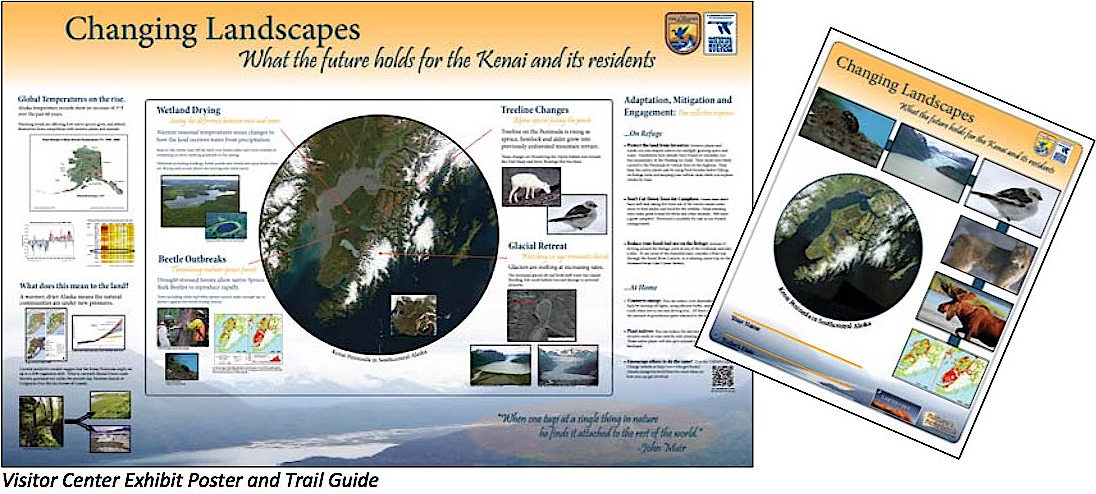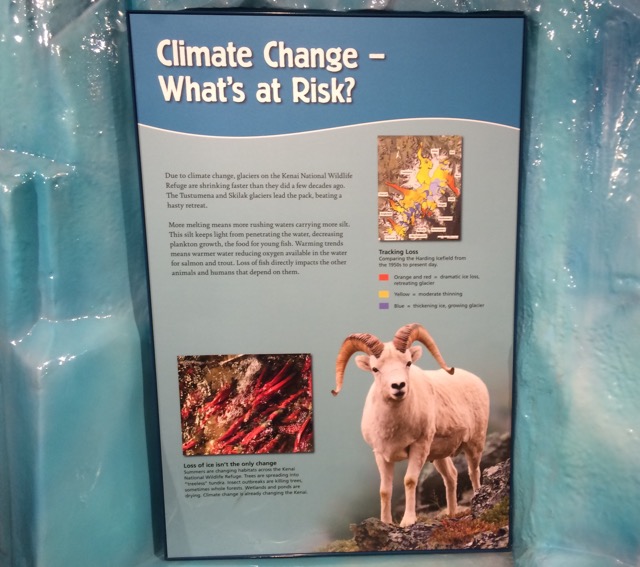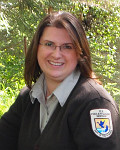
The Changing Landscapes program communicates the science behind Climate Change to the visitors to the Kenai National Wildlife Refuge Visitor Center in south‐ central Alaska. Climate change science is complex, intimidating and can be an overwhelming issue unless it’s interpreted in a clear, comprehensive and engaging manner. Several products were developed over 5 years, culminating in having the climate messages integrated into existing refuge themes and interpretive products across all operations.

The first Changing Landscapes product, the visitor center display poster, broke down the basics of climate change on a state, regional and local level, addressed four specific effects of concern on the Kenai Peninsula, presented the future Peninsula‐wide ecosystem changes suggested by current predictive modeling, and concluded with ways each visitor can reduce their carbon footprint both on and off the Refuge. A reformatted display poster carrying the same interpretive message was also printed and displayed in the seasonally‐open Visitor Contact Station near the Skilak Wildlife Recreation Area. Shortly after finishing this poster, two interactive exhibit activities and three more information pieces were added to prepare Changing Landscapes for the temporary exhibit space in the Headquarters visitor center.
Shortly after finishing the poster, two interactive exhibit activities and three more information pieces were added to prepare Changing Landscapes for the temporary exhibit space in the Headquarters visitior center.

These activities included a demonstration on albedo, an explanation of increased river water turbidity and the salmon/plankton connection, and several pieces showing bark beetles and the damage they cause to spruce trees. With the visitor center interactive exhibit in place, the next part of this program was developed: the self‐guided trail walk. The impacts to the Kenai Peninsula are complex enough that hands‐on practice is really essential for visitor understanding. Though guided hikes have been offered and continue to be scheduled, it is important to offer alternative methods of experiencing climate change on the ground through first hand exploration of the issues and in a way that is not restricted to ranger schedules. A self‐guided backpack loan program is now in place along with a comprehensive activity guide suitable for adults and children as young as 3 years old.
This guide combines Kenai Peninsula history, boreal forest biology, fire ecology, predicted climate modeling and a study in phenology through multiple hands‐on activities designed for specific locations along a 1⁄4 mile trail. The phenology program uses the national Nature’s Notebook program to store collected data and teach the importance of species lifecycle studies. An emphasis on the theme “Look Closer” encourages participants to get to know the forest, wetland and lake and in doing so provides the opportunity to form a personal connection with the land, and thus an interest in what may happen in just 60 years given current local predictions. People won’t care about a changing resource if they can’t detect and see relationships and patterns personally.

Finally, with the development and construction of our new eco-friendly visitor center in Soldotna, Change on the Landscape is a featured and integrated throughout the new exhibits. The original poster may have been the “sea change” which has given rise to an full suite of products with climate messages included. This affords our staff with natural segues into meaningful conversations with visitors and residents alike.
For details, contact:
 Leah Eskelin
Leah Eskelin
Park Ranger, Kenai National Wildlife Refuge
P.O. Box 2139, Soldotna, Alaska 99669
(907) 262-7021
